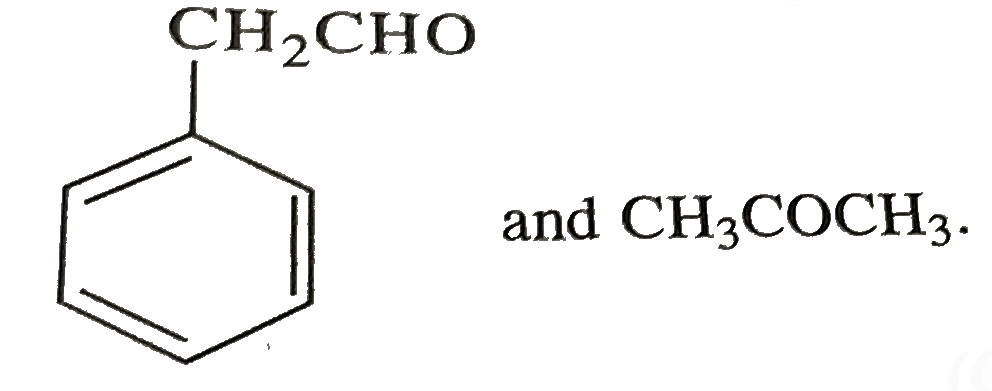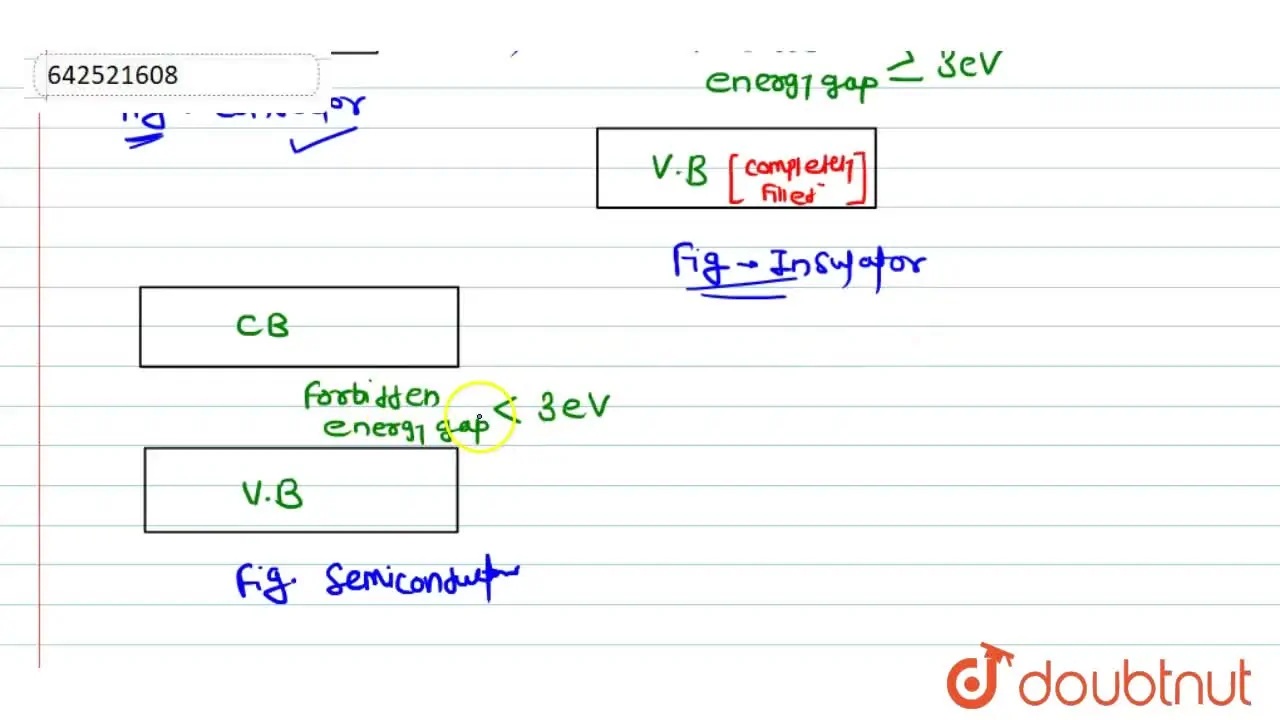Write any two distinguishing features between conductors, semiconductors and insulators on the basis of energy band diagrams.
Video Solution
Text Solution
Energy bands : A group of very large number of energy levels lying closely in a very small energy range formed an energy band.
Formation of energy bands in solids : A free atom has well defined energy levels.
Example : Silicon, Si has the electronic configuration 1s2,2s2,2p6,3s2,3p2. The outer s-level has 2N electrons and p-level has 2N electrons. The s-level is completely filled while the p-level is not completely filled and can accommodate 4 N electrons to make 6N electrons.
(i) The lower completely filled band at 0 K is the valence band and
(ii) The upper unfilled band is the conduction band.
The difference between the higher energy in a bond and the lowest energy in the next higher band is called forbidden energy gap E.
The conductivity depends upon the energy gap (Eg between the top fo valence band VB and the bottom of the conduction band CB.
Smaller the forbidden energy gap In a semiconductor, higher is the conductivity at a particular temperature.
For insulator Eg>3eV, for semiconductor Eg=0.2eV. For metal Eg=0.
Classification of solids :
(i) Insulator : In insulator, the valence band is completely filled. The conduction band is empty and forbidden energy gap os quite large. So, no electron is able to go from valence band to conduction band even if electric field is applied. Hence, electrical conduction is impossible. The solid/substance is an insulator.
(ii) Metals (conductors) : In metals, either the solution band is partially filled or the conduction and valence bond partly overlap each other. If small electric field is applied across the metal, the free electrons start moving in a direction opposite to the direction of electric field. Hence, metal behaves as a conductor.
(iii) Semiconductors : At absolute zero kelvin, the conduction band is empty and teh valence band is filled. The material is insulator at low temperature. However, the energy gap between valence band and conduction band is small. At room temperature, some valence electrons acquire thermal energy and jump to conduction band where they can conduct electricity. The holes left behind in valence band act as a positive charge carrier.
|
Updated on:21/07/2023
Related Playlists
- BOOK - XII BOARD PREVIOUS YEAR PAPER ENGLISHCHAPTER - XII BOARDSEXERCISE - [Set- II]4videos
XII BOARDS
- BOOK - XII BOARD PREVIOUS YEAR PAPER ENGLISHCHAPTER - XII BOARDSEXERCISE - [Set-III]3videos
XII BOARDS
- BOOK - XII BOARD PREVIOUS YEAR PAPER ENGLISHCHAPTER - XII BOARDSEXERCISE - SET-III, DELHI BOARD4videos
XII BOARDS
- BOOK - XII BOARD PREVIOUS YEAR PAPER ENGLISHCHAPTER - SAMPLE PAPER 2019EXERCISE - SECTION D6videos
SAMPLE PAPER 2019
Similar Questions
Distinguish between a conductor , a semiconductor and an insulator on the basis of energy band diagrams.
View SolutionDistinguish between intrinsic and extrinsic semi-conductors on the basis of energy band diagram.
View SolutionWrite test to distinguish between
 View Solution
View SolutionWrite a distinguishing feature of metallic solids.
View SolutionDraw energy band diagram of conductors, semiconductors and insulators.
View SolutionDistinguish between Good conductors and bad conductors of heat
View SolutionGive two distinguishing features of the Cro-Magnon man.
View SolutionTell one distinguishing feature between eukaryotes and prokaryotes.
View SolutionGive any two distinctive features of Dryopithecus.
View SolutionWrite a distinguishing feature of a metallic solid compared to an ionic solid.
View Solution


